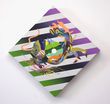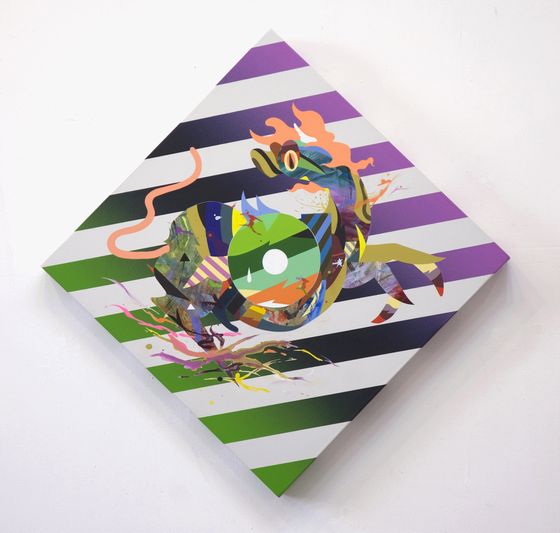
Shining Where You 'd Be
No Frame
Year: 2011
Acrylic and mixed media on canvas
Signed
Delivery Time : 2-3 weeks
Provided in the partnership with:
Artist
- sold out (price of the work)
- +Shipping Fee
Motif from traditional Asian imagery put into new expression
At first glance, Matsuyama's paintings come across as bright pastiches of color and form, pattern and expressive whimsy. The motif seen in this work was inspired from a painting by court painter Kanō Sanraku (1559-1635) titled "Dog Chasing (Inu-oi-mono)" from the first decades of the Edo Period. Dog chasing was originally a training to develop warrior's archery technique by shooting a dog from a horse but developed into a ceremonial event. His works are figurative for the most part, and his chosen repertoire of magical animals and human beings is culled not only from the canon of Japanese art. His bold use of color and his painterly touch elicit a sense of motion in the figures portrayed, and in a way, Matsuyama's work might be said to share traits with graffiti or street art thanks to these and other factors.
Constructing and blending Western techniques to build up one figure.
When you look in details, you will discover that the make-up of these motifs are anything but direct; certain areas of the figure are constructed with crisp patterns and shapes, whereas others are fully defined by gestural abstraction. Matsuyama conflates figurative and abstract painting techniques into a singular style, utilizing both to give birth to his forms and to create a most alluring tension between the two poles of art history as it relates to paint. It may not seem apparent to the viewer, but Matsuyama actually accomplishes this feat through a subtractive process. He first lays down his abstract underground, its washes and whirls readily apparent in his painterly gestures, and once that layer has dried, proceeds to paint over certain areas in either bold patterning, or in the case of his "border areas," solid color. Once this is understood, the stripes or color gradation of his painting are no longer the background of the work, but are instead the final layer which both gives form to the figures depicted and masks a large area of abstract-expressionistic folly previously laid down. Thus, by taking away the abstract, Matsuyama both literally and figuratively gives rise to figuration.
A visual vocabulary rectifies the past to explore new aesthetics for global age
Matsuyama has blended all of the element into a most contemporary amalgamation that very actively erases the boundaries between nations, mindsets, art histories and aesthetic tropes. His global vocabulary successfully references the past without bowing down to it. He has created a world of whimsy and energy that very smartly mimics his own talents, interests and global outlook, as well as the whole of art history lingering beyond.
click images to enlarge.
Related Works
|
|














